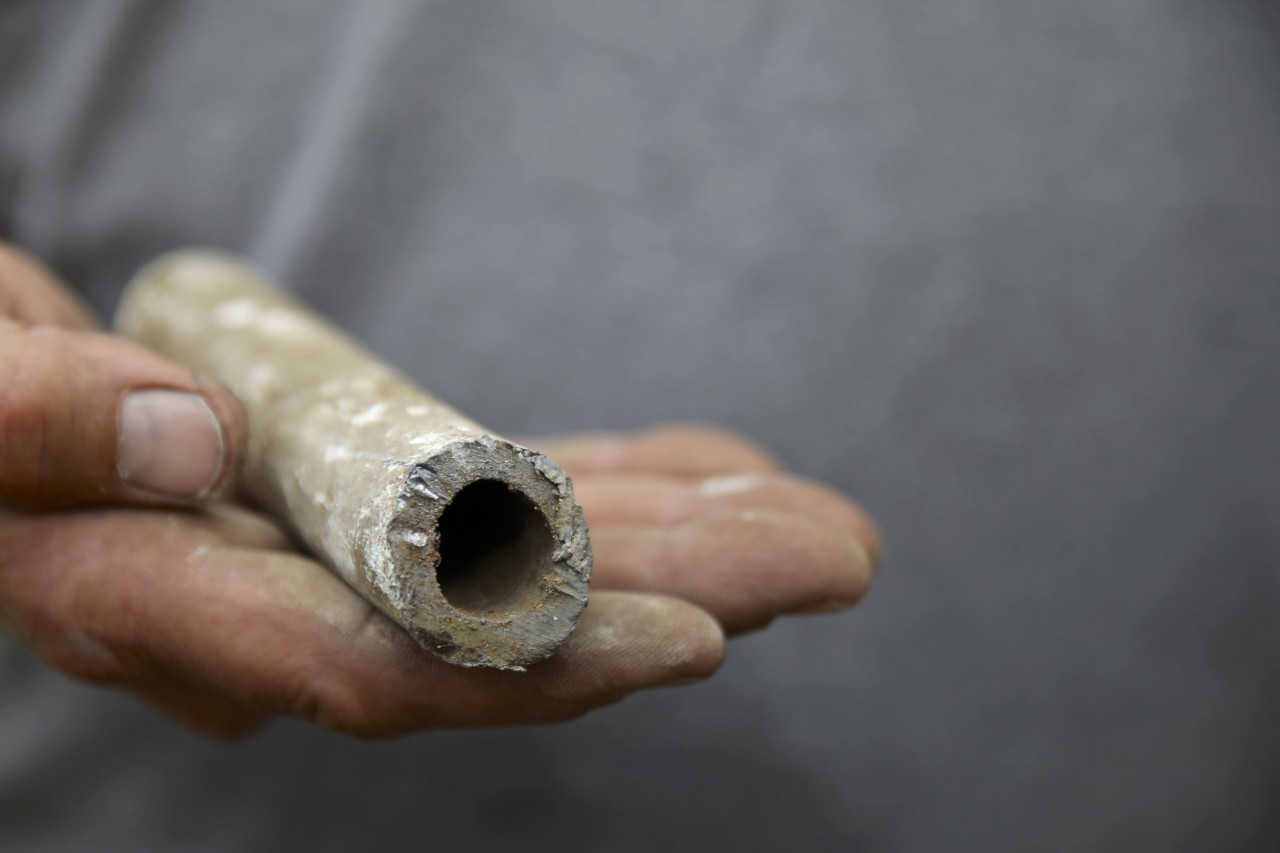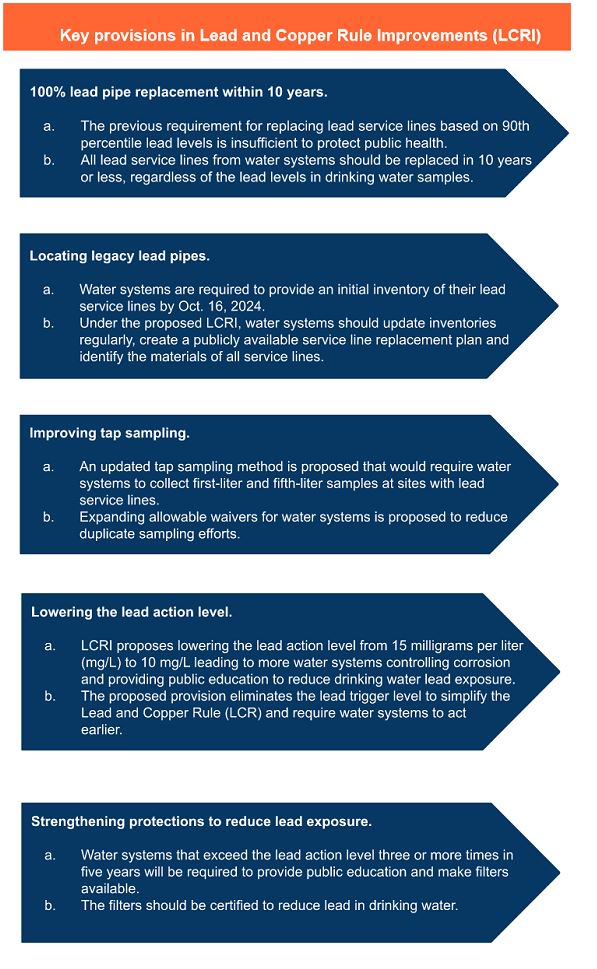A look at key changes and implications with the EPA lead and copper rule 2024
The U.S. Environmental Protection Agency (EPA) has recently proposed revisions to the National Primary Drinking Water Regulation (NPDWR) to limit lead exposure. The proposed Lead and Copper Rule Improvements (LCRI) simplifies the 2022 Lead and Copper Rule Revisions (LCRR) and include provisions for efficient implementations by water systems to reduce lead exposure in communities.
The proposed EPA Lead and Copper Rule 2024 emphasizes three key areas:
- Replacing lead service lines.
- Reducing complexity to protect public health.
- Increasing transparency and informing the public of lead exposure and health risks.
Once the proposed LCRI is finalized, water systems across the U.S. will be required to replace lead service lines within 10 years. Partnering with a team of water engineers can help communities replace lead service lines and ensure improved drinking water quality.
EPA Lead and Copper Rule 2024: Latest developments
There have been revisions to the Lead and Copper Rule (LCR) since it was first introduced in 1991. The 2022 LCRR focused on early mitigation strategies and service line replacements, requiring lead testing for drinking water in schools and childcare facilities and publicly identifying the locations of lead service lines.
There have been revisions to the Lead and Copper Rule (LCR) since it was first introduced in 1991. The 2022 LCRR focused on early mitigation strategies and service line replacements, requiring lead testing for drinking water in schools and childcare facilities and publicly identifying the locations of lead service lines.
The proposed EPA Lead and Copper Rule 2024 aims to set optimal water quality parameters for medium water systems (serving 10,000 to 50,000 consumers) with corrosion control treatment. The LCRI proposal offers more flexibility for small water systems serving 3,300 residents or fewer, letting them choose among three options if exceeding the lead action level:
- Install optimized corrosion control treatment.
- Install and maintain point-of-use devices.
- Replace all lead-bearing plumbing.
As the proposed LCRI requires all water systems to conduct mandatory service line replacement, lead service line replacement is no longer a remedial action when small systems exceed the lead action level. The EPA aims to finalize the proposed LCRI before Oct. 16, 2024.
Lead service line replacement is time-consuming and costly, and community leaders must stay updated on the latest legislation to ensure water systems comply with lead action levels. Partnering with a team of water engineers can help communities navigate each step of the lead service line replacement process.
Partner with Fehr Graham
At Fehr Graham, we are committed to helping communities access safe and reliable drinking water. Our team of experts helps municipalities identify and inventory lead service lines, secure timely funds, provide technical assistance and manage and oversee construction to improve water lines across your community.
To learn more about EPA lead and copper rule 2024 and how Fehr Graham can help your municipality comply, contact us or call 608.329.6400.
 |
Jennifer Buholzer, PE, is a Project Engineer who works on everything from water and wastewater projects to transportation and park projects. She develops relationships with our clients to help them find the most affordable and sustainable solutions. Jen is knowledgeable, results-driven and enthusiastic, offering trainings and webinars and serving as a conference speaker at dozens of events annually. Reach her at |
Collaborative, Insightful, Results-Driven Solutions
Fehr Graham provides innovative engineering and environmental solutions to help improve the lives and communities of our customers.


